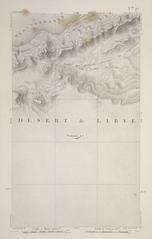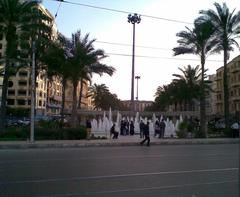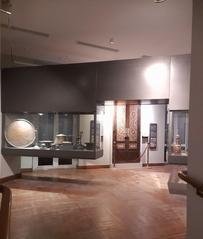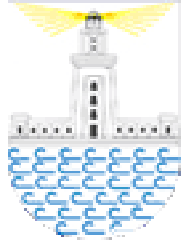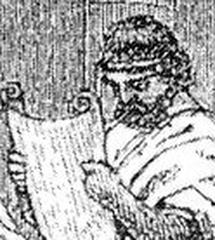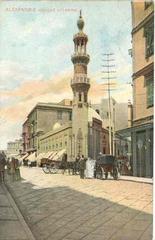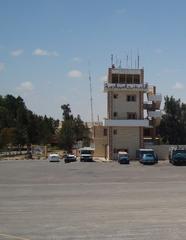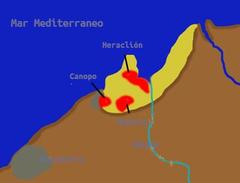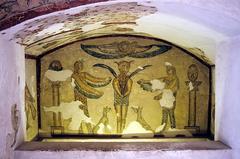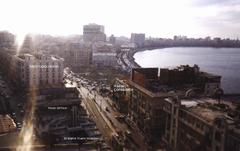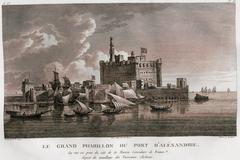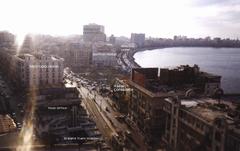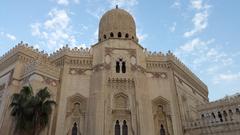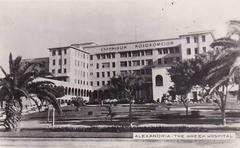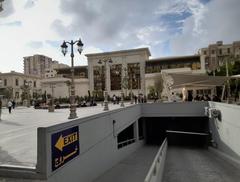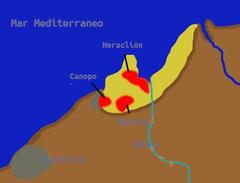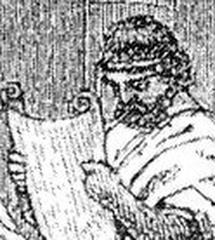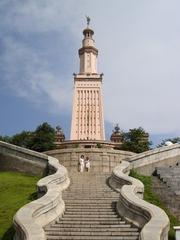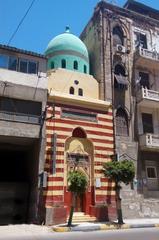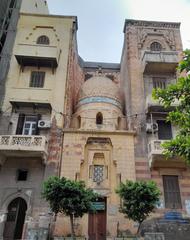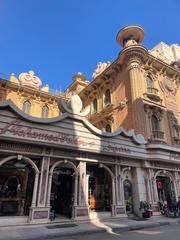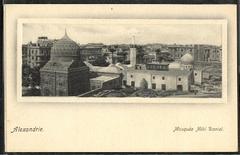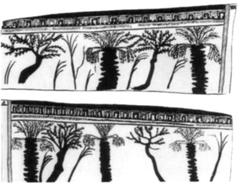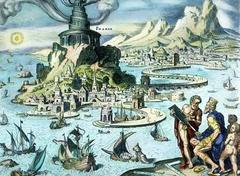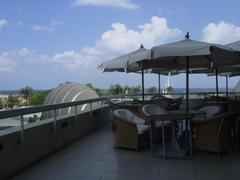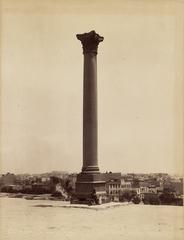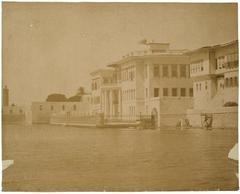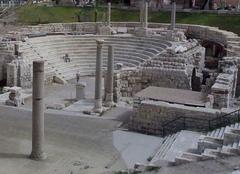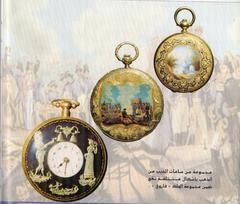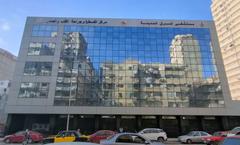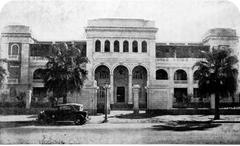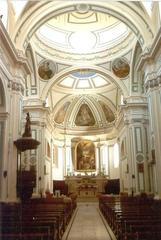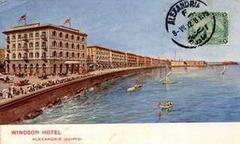Okalle Monferrato: Visiting Hours, Tickets, and Historical Sites in Alexandria, Egypt
Date: 14/06/2025
Introduction
Okalle Monferrato, located in the heart of Alexandria, stands as a vibrant testament to the city’s cosmopolitan past and multicultural heritage. This historic urban caravanserai—an “Okalle” or “Wakaleh”—was constructed between the late 19th and early 20th centuries, during Alexandria’s golden age when Italian, Greek, Jewish, Levantine, and Egyptian communities coexisted and contributed to the city’s economic and cultural boom. Characterized by its blend of Italianate and Egyptian architectural elements and a unique social legacy, Okalle Monferrato is a must-visit for history, architecture, and culture enthusiasts (Local Guide to Egypt; IJCH; World History Encyclopedia).
This guide provides comprehensive information on Okalle Monferrato’s history, visitor access, ticketing, accessibility, etiquette, nearby attractions, and practical travel tips, helping you plan an enriching visit to one of Alexandria’s most fascinating historical sites (amazingworld.travel; Alexandria.com).
Table of Contents
- Historical Background
- Visiting Okalle Monferrato
- Travel Tips and Nearby Attractions
- Practical Information: Getting There and Around Alexandria
- Frequently Asked Questions (FAQ)
- Conclusion and Visitor Recommendations
- References
Historical Background
Origins and Context
During the late 19th and early 20th centuries, Alexandria attracted waves of European immigrants, notably Italians from the Monferrato region. The term “Okalle” refers to a caravanserai—a mixed-use commercial and residential complex. Okalle Monferrato became a hub for merchants, artisans, and expatriates, reflecting Alexandria’s thriving multiculturalism, especially after the opening of the Suez Canal in 1869. At its peak, Italians, Greeks, Jews, Armenians, and Levantines contributed to Alexandria’s dynamic urban tapestry (Study.com).
Architectural Features
Okalle Monferrato exemplifies the Okalle typology, featuring a central courtyard surrounded by arcaded galleries. Italianate details—arched windows, wrought-iron balconies, and decorative stucco—blend with traditional Egyptian design. This architectural style fostered both commerce and community, with shops and storage rooms on the ground floor and apartments above. The building’s layout and ornamentation reflect Alexandria’s status as a Mediterranean crossroads (World History Encyclopedia; Ancient Origins).
Socio-Economic and Cultural Role
Okalle Monferrato was more than a market—it was a microcosm of Alexandria’s cosmopolitan society. The Okalle served as a commercial nexus, connecting local producers and international traders. Its strategic city-center location enabled easy access to the port and major markets. The building hosted social events, religious celebrations, and gatherings, cementing its place in Alexandria’s pluralistic urban life (Britannica; IJCH).
Preservation and Modern Legacy
Following the 1952 Egyptian Revolution and the departure of many foreign residents, Okalle Monferrato’s original cosmopolitan character faded. However, growing awareness of its architectural and historical significance has spurred preservation efforts. Today, the Okalle is featured in heritage tours, cultural festivals, art exhibitions, and academic studies. Restoration projects aim to retain its unique Mediterranean-Egyptian identity and ensure its survival for future generations (Local Guide to Egypt; Ancient Origins).
Visiting Okalle Monferrato
Hours and Ticketing
- Visiting Hours: Typically open to guided tours from 9:00 AM to 6:00 PM, Sunday through Thursday. The best months for visiting are October through April, when the climate is mild (amazingworld.travel).
- Tickets: Entry is often free if you are visiting public areas, but specialized heritage or guided tours may charge 50–150 EGP per person. Some special exhibitions or events may have separate fees. Booking in advance with reputable local guides is highly recommended (Alexandria.com).
Accessibility
- The Okalle’s historic design includes steps and narrow passageways, posing challenges for visitors with mobility impairments. Some areas are accessible, but it’s best to contact tour providers in advance for specific arrangements.
- The nearest tram stop, “Souk El-Attarin,” is a five-minute walk away. Parking is limited; public transport or ride-hailing is advised.
Visitor Etiquette and Photography
- Photography is permitted in public spaces, but always seek permission before photographing residents or private areas.
- Dress modestly, especially during religious events or when entering communal spaces.
- Respect local customs and current occupants’ privacy (e-visa-egypt.com).
Travel Tips and Nearby Attractions
Best Time to Visit
- October to April offers comfortable temperatures (18°C–25°C/64°F–77°F) and fewer crowds (travellersworldwide.com).
- Peak season is December to February. For a quieter experience, try late autumn or early spring.
Getting There
- Okalle Monferrato is centrally located in Alexandria. It is accessible via taxi, tram, or on foot from major sites.
- Borg El Arab International Airport is about 40 km away. Misr Station connects Alexandria to Cairo by train.
Nearby Landmarks
- Bibliotheca Alexandrina: Modern library and cultural center (amazingworld.travel).
- Alexandria National Museum: Artifacts from Pharaonic to Islamic eras.
- Corniche: Waterfront promenade with sea views.
- Graeco-Roman Museum: Hellenistic and Roman artifacts.
- Local Souks: Colorful markets for crafts and souvenirs.
Dining, Shopping, and Community Life
- Enjoy Mediterranean seafood and Egyptian specialties at local cafés and restaurants.
- Artisan boutiques offer unique crafts, textiles, and antiques.
- Cultural events and festivals are held year-round, especially during Alexandria’s major celebrations.
Practical Information: Getting Around Alexandria
- Transport: Taxis, Uber/Careem, trams, and buses are widely available. Walking is enjoyable in central districts, but sidewalks may be uneven.
- Accommodation: Options range from luxury hotels to budget guesthouses.
- Safety: Standard precautions apply. Tourist Police hotline: 126.
- Language: Arabic is official; English and French are common in tourist hubs.
- Currency: Egyptian Pound (EGP). ATMs and credit cards accepted widely.
- Visitor Services: Main tourist office in Midan Saad Zaghloul near Ramla Station.
Frequently Asked Questions (FAQ)
Q: What are Okalle Monferrato’s visiting hours?
A: Generally open 9:00 AM–6:00 PM, Sunday through Thursday, usually via guided tours.
Q: Is there an admission fee?
A: Entry to public spaces is usually free. Guided tours or exhibitions may charge 50–150 EGP.
Q: How do I get there?
A: Centrally located in Alexandria’s historic center; accessible by tram (Souk El-Attarin stop), taxi, or on foot.
Q: Is it accessible for people with disabilities?
A: Partial accessibility. Contact tour providers for special arrangements.
Q: Are guided tours available?
A: Yes. Book in advance for the best experience and historical insights.
Q: Are photos allowed?
A: In public spaces, yes; seek permission for private or residential areas.
Q: What are the nearby attractions?
A: Bibliotheca Alexandrina, Alexandria National Museum, Corniche, Graeco-Roman Museum, and local souks.
Conclusion and Visitor Recommendations
Okalle Monferrato is a living symbol of Alexandria’s layered history and Mediterranean multiculturalism. Its architecture, social legacy, and ongoing community role make it a unique destination for travelers seeking authentic cultural experiences. Whether you’re passionate about history, architecture, or urban culture, a visit to Okalle Monferrato alongside Alexandria’s other landmarks will offer you a deeper appreciation of Egypt’s Mediterranean gateway.
Remember to plan ahead, book guided tours, and respect local customs. Supporting local artisans and heritage preservation initiatives ensures that this invaluable site continues to inspire future generations (World History Encyclopedia; Alexandria.com).
For more details, updates, and personalized itineraries, download the Audiala app and connect with local guides.
References and Further Reading
- Local Guide to Egypt: Visiting Okalle Monferrato
- IJCH: Okalle Monferrato Cultural Insights
- Alexandria.com: Cultural Legacy
- AmazingWorld Travel: Things to Do in Alexandria
- Springer Link: Architectural Heritage
- Rambling Adventurista: Travel Guide to Alexandria
- Travellers Worldwide: Best Time to Visit Egypt
- World History Encyclopedia: Alexandria
- Study.com: History & Culture of Alexandria
- Ancient Origins: Ancient Alexandria
